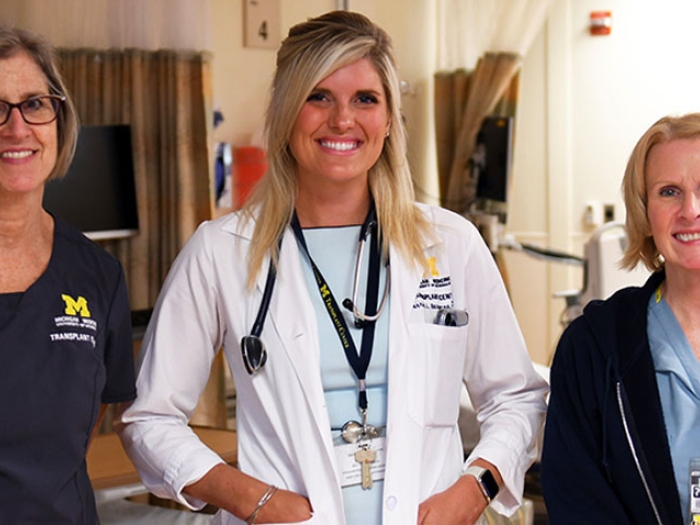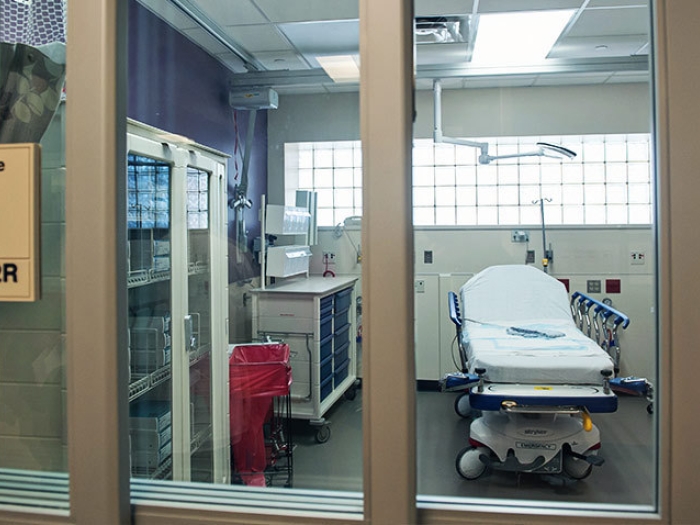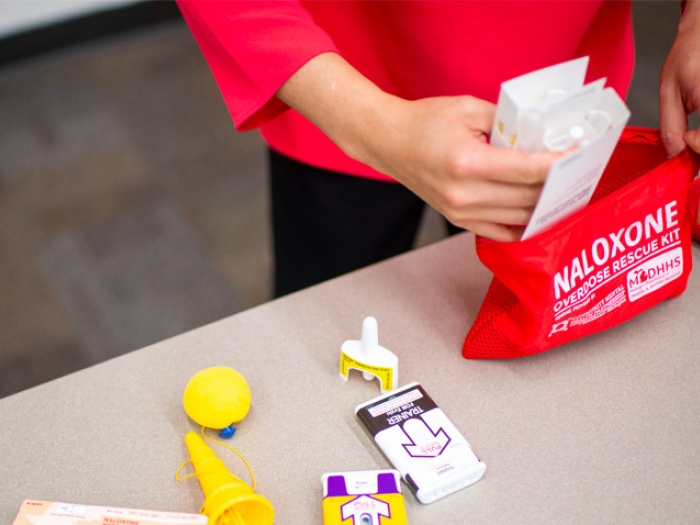A U-M study of pancreatic cancer surgeries suggests experience with related procedures could help when setting volume standards for relatively rare operations.
5:00 AM
Author |

It's logical that a surgeon who performs a high volume of a specific procedure would produce good outcomes. It might then make sense to credential surgeons for procedures based on volume to ensure better patient outcomes.
That process, however, could have unintended consequences. Rigid volume thresholds might create scenarios where so few providers are credentialed to perform less common procedures that patients have a hard time getting care.
So, is there another way to ensure safe patient outcomes for procedures while ensuring enough surgeons were certified to perform them?
University of Michigan surgical resident Kyle Sheetz, M.D., and his colleagues on a recent study think so: By considering anatomically similar procedures.
Sheetz was the first author of a recent JAMA Network Open study that examined how outcomes for pancreaticoduodenectomies — or Whipples, as they are commonly called — are affected by a surgeon's volume of related hepatopancreatobiliary (HPB) procedures.
It found that surgeons who conducted a high volume of HPB procedures, but relatively few Whipples, had outcomes on par with their colleagues who conducted more Whipples.
Like Podcasts? Add the Michigan Medicine News Break to your Alexa-enabled device or subscribe for updates on iTunes, Google Play and Stitcher.
"This study is meant to show that we can do simple things to permit greater flexibility in surgeon-specific credentialing strategies that are intuitive and easy to measure," Sheetz says.
Though only a single factor in ensuring patient safety, credentialing is often the last safeguard in ensuring that surgeons performing certain high-risk operations have the right training and experience, he adds.
Surrogate procedures help predict outcomes
A Whipple is a primary surgical treatment for pancreatic cancer. It involves removing the head of the pancreas, most of the duodenum, a portion of the bile duct, the gallbladder and associated lymph nodes. It's a relatively uncommon, complex, and high-risk operation, and an example of a procedure for which hospital and surgeon volume are commonly discussed as important factors in patient outcomes.
Sheetz and his co-authors analyzed Whipple case data from 2012 through 2014 from the all-payer State Inpatient Databases for six populous and geographically diverse states: New York, Florida, Maryland, Washington, Michigan and New Jersey. The data set included more than 1,000 surgeons and 175,000 patients. Surgeons were segmented by three thresholds meant to represent intuitive examples of case volumes: Those who performed 6, 12 and 36 Whipples annually.
Only 54 surgeons — or 5.3% of the sample — even met the threshold of 12 annual Whipples performed. For the purpose of this study, this level was considered the gold standard.
"What surprised me was the number of surgeons who do a very low volume of this operation in the United States, even though for decades now we've focused on volume and its importance on patient outcomes," Sheetz says.
Unsurprisingly, those who performed Whipples at higher volumes had better outcomes than those who performed them at lower ones.
Overlaid with related HPB procedure data, things looked different, especially when analyzing the surgeons who performed a low volume of Whipples.
Mortality and complications for Whipples performed by those surgeons varied significantly depending on their related HPB procedure volume. Surgeons who performed a higher volume of related HBP procedures had better Whipple outcomes, but only if they had enough volume of those related procedures under their belts.
This study is meant to show that we can do simple things to permit greater flexibility in surgeon specific credentialing strategies that are intuitive and easy to measure.Kyle Sheetz, MD
The data showed that the lowest volume surgeons (those performing 1-2 Whipples annually) would have to perform an additional 27 related HPB procedures per year to see their Whipple outcomes match those of the surgeons performing 12 or more Whipples per year.
Experience still matters a lot, whether that experience is specific or related.
Striking a balance between safety and access
Sheetz said the study suggests that hospitals can still provide safe outcomes for patients by using flexible credentialing considerations.
"It's good for patients because in theory it expands the number of surgeons who are safe to perform their operations," he says. "For surgeons, it makes sense because it reflects their scope of practice."
MORE FROM THE LAB: Subscribe to our weekly newsletter
Hospitals might also want to look to related procedure data to better assess how their surgeons have performed or will perform with specific procedures.
"It allows them to use a whole gamut of procedures for which most of these surgeons are already credentialed to perform to monitor their safety for the high risk-index operations," Sheetz says.
Volume-based credentialing, while intended to achieve commendable goals for patient care, can benefit from more nuance to serve everyone better, Sheetz notes.
As with any guidelines, it's about weighing the benefits against the risks, he says: "Everything is a tradeoff. If you make the volume threshold too high, you're going to have an access problem. If you make it too low, you may have a blunt metric that doesn't really change anything."
The study was supported by grants from the Agency for Healthcare Research and Quality (2T32HS000053-27, K08HS024763-01) and from the National Institute on Aging, National Institutes of Health (R01AG039434).
Additional authors on the study include: Usha Nuliyalu, Hari Nathan and Christopher J. Sonnenday, all of U-M.
Paper cited: "Association of Surgeon Case Numbers of Pancreaticoduodenectomies vs Related Procedures With Patient Outcomes to Inform Volume-Based Credentialing," JAMA Network Open. DOI: 10.1001/jamanetworkopen.2020.3850

Explore a variety of healthcare news & stories by visiting the Health Lab home page for more articles.

Department of Communication at Michigan Medicine
Want top health & research news weekly? Sign up for Health Lab’s newsletters today!





